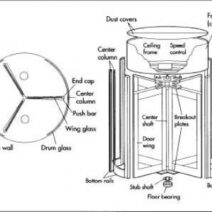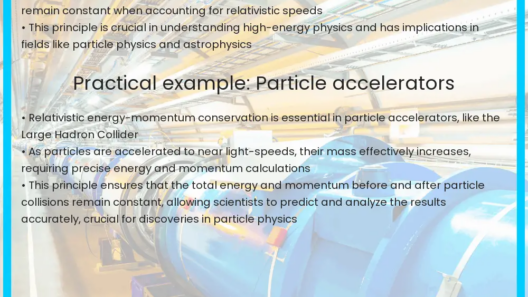In the vast expanse of the cosmos, the motion of celestial bodies has captivated humanity for centuries. The intricate dance of planets around stars, particularly that of our own Earth around the Sun, raises a fundamental question: is total mechanical energy conserved in planetary orbits? To explore this query, we must delve into the principles of mechanical energy and the specific context of gravitational interactions in space.
Mechanical energy, defined as the sum of kinetic and potential energy in a system, plays a pivotal role in understanding orbital mechanics. Kinetic energy pertains to the energy an object possesses due to its motion, while potential energy is the energy stored within a system due to an object’s position. In the case of planetary orbits, the pivotal force is gravitational—an omnipresent force that dictates how celestial bodies interact with one another.
The conservation of energy is a fundamental principle in physics, asserting that energy cannot be created or destroyed, only transformed from one form to another. In an ideal, isolated system, this principle holds true, suggesting that the total mechanical energy remains constant over time. In the realm of planetary orbits, this principle can indeed be observed under certain conditions.
Consider a planet in an elliptical orbit around a star. As the planet moves closer to the star, its gravitational potential energy decreases. Simultaneously, due to the principles of energy conversion, its kinetic energy increases as it accelerates towards periapsis, the nearest point in its orbit. Conversely, as the planet moves away from the star towards apoapsis, its speed decreases, and its kinetic energy diminishes while its potential energy increases. This interplay results in a fascinating display of energy transformation, yet the total mechanical energy remains conserved.
However, real-world scenarios complicate this seemingly straightforward picture. While isolated systems in vacuum can experience conservation of mechanical energy, the introduction of external forces—such as tidal forces, atmospheric drag, or gravitational interactions with other celestial bodies—can disrupt this equilibrium. For instance, the gravitational influence of the Moon subtly alters Earth’s orbit, leading to slight variations in mechanical energy pertaining to the Earth-Sun system.
Furthermore, energy dissipation through non-conservative forces, such as frictional forces from atmospheric interactions, may lead to a gradual loss of mechanical energy in orbiting bodies, altering the conditions of their orbits. For instance, low Earth orbit satellites experience atmospheric drag, which diminishes their mechanical energy and causes orbital decay over time. In contrast, celestial bodies devoid of such interactions tend to exhibit more stable energy states.
One profound implication of energy conservation in the cosmos is that it offers insights into the formation and evolution of planetary systems. By analyzing the energy states of exoplanets—planets outside our solar system—scientists can infer details regarding their masses, orbits, and even potential habitability. The dynamics of celestial mechanics, driven by gravitational interactions, ensure that energy conservation can explain the complex relationships between various bodies within stellar systems.
This leads to a broader philosophical consideration. The laws of physics that govern planetary orbits are not exclusive to our solar system. They apply universally, suggesting a deeper interconnectedness of all celestial entities. As humanity seeks to unravel the mysteries of the universe, understanding these fundamental principles not only satisfies our curiosity but also empowers us to harness energy more efficiently here on Earth.
Ultimately, total mechanical energy in planetary orbits can be considered conserved in idealized scenarios, where external influences are negligible, and systems remain isolated. Under such conditions, the intricate ballet of kinetic and potential energies reveals the beauty of nature’s design. However, this conservation can be disrupted by various factors that echo the complexity of real-world interactions and illustrate the dynamic nature of cosmic environments.
The study of planetary orbits through the lens of mechanical energy conservation poses enduring questions about our place in the universe. While Earth continues its journey around the Sun, the energies at play remind us of the importance of conservation—not only of mechanical energy in celestial mechanics but also of energy in its myriad forms here on our own planet.
As we grapple with the challenges of climate change and resource depletion, looking to the cosmos can inspire innovative solutions to our terrestrial energy dilemmas. By understanding the principles that govern energy conservation on a cosmic scale, we can glean insights that inform our practices toward achieving sustainability and resilience in the face of ecological adversity.
Thus, while total mechanical energy can be conserved within the confines of gravitational orbits, the implications extend far beyond mere celestial mechanics. It hints at a grand structure underlying the universe, inviting us to contemplate our own systems of energy, our relationships with one another, and our stewardship of the Earth we inhabit.







